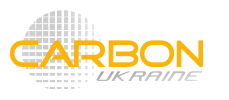Formaldehyde detection
There is growing awareness of monitoring the formaldehyde level in the atmosphere. Formaldehyde is considered as a carcinogen. Sources of formaldehyde includes some manufactured wood products used as building materials, in cabinets, and in furniture (e.g., medium density fiberboard, particle board, plywood with urea formaldehyde resin, urea formaldehyde foam insulation and tobacco smoking; ozone-initiated chemical reactions with common indoor VOCs, and unvented combustion appliances.
Given the seriousness of problem caused by the presence of formaldehyde even in lower concentration, it would be ideal to detect the amount of formaldehyde using a direct method such as conventional thermal desorption technique. However, the challenge lies in adsorption of formaldehyde by an adsorbent. Most sorbents including silica and carbons are poor adsorbers of formaldehyde, particularly when formaldehyde is present in low concentration (< 100 ppm). We recently developed a carbon based sorbent specifically designed for detection of formaldehyde using conventional thermal desorption technique.
Customized products
Need help determining which material best suits your application? Please email us at This email address is being protected from spambots. You need JavaScript enabled to view it.
. While companies using porous carbon can choose from hundreds of off-the-shelf commodity products, Carbon-Ukraine offers a new option: carbons whose properties are rapidly tuned for a specific application. We are interested in partnering with end-users to develop carbons specifically tailored to meet their needs. Normally, when developing materials for a new application we will begin by thoroughly studying the underlying technology and the key materials properties required.
Once we have an understanding of the materials properties required, we can provide small quantities of material for evaluation. Based on the results of your evaluation, we can provide additional samples to further optimize our materials for your application.
There are no articles in this category. If subcategories display on this page, they may contain articles.



